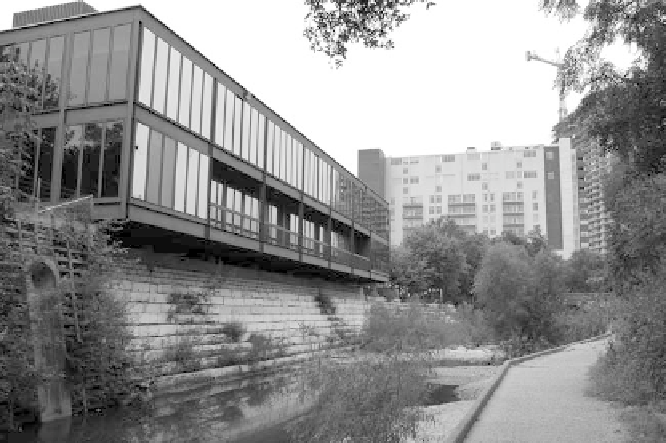Environmental Engineering Reference
In-Depth Information
using the latest technological strategies. They create a sharp distinction
between the built environment and predevelopment hydrologic fl ows,
suggesting that the control of nature is the inevitable outcome of urban-
ization. However, such approaches to urban fl ood control often confl ict
with activities to improve water quality because stabilizing the channel for
fl ood protection and erosion control is in direct opposition to restoration
efforts and the creation of biological habitat. A Watershed Department
staff member notes:
Internally our department is struggling with the mission of fl ood control and do-
ing creek channelization without affecting water quality issues. I don't see how
it can be done. The stream systems are so dynamic and in some places they're
degrading or there's erosion happening and in other places, the land fl attens out
and it's dumping some of the bedload. So you really have to know where you are
in the system and the changes over time in the drainage area due to urbanization.
18
In hindsight, early municipal leaders would have done well to include
signifi cant setbacks from the creeks to keep structures and roads away
from the eroding creek banks and the fl ashy water fl ows. A Watershed
Department staff member notes that “in the inner city, some of these lot
lines go right down to the centerline of these creeks. And the houses are
right there. It's incredible what we are up against”
19
(see fi gure 4.4). In
Figure 4.4
A cantilevered building over Shoal Creek in the urban core.

Search WWH ::

Custom Search